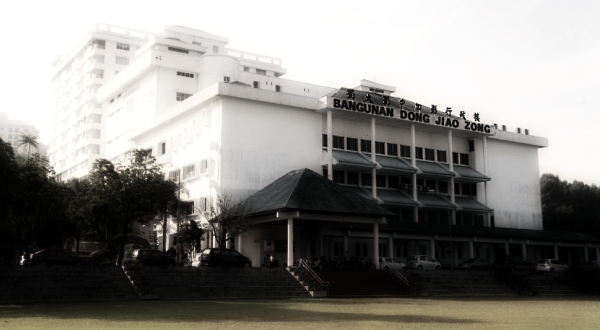The Chinese dilemma

The Malaysian Chinese community indeed pinned its hopes on the BN before. Even though BN won the overwhelming support of Chinese Malaysians in the general elections of 1974, 1982, 1995, 1999 and 2004, the ruling coalition never actually instituted fair and equitable governance. The community could only look to some humble gains such as new or relocated SJKCs when the Malays were politically in disunity.
Lim Sue Goan, Sin Chew Daily
Every time when it comes to a general election, the local Chinese associations will customarily hop into some kind of action, submitting some sort of memorandum of understanding in hope of resolving the issue of Chinese language education once and for all.
Unfortunately most of the appeals would go down the drain, including the call for UEC recognition and institutionalizing the construction of new Chinese primary schools before the 2008 general election.
The same issues were raised again in 2013. And this year, Dong Zong (the United Chinese School Committees Association of Malaysia), Jiao Zong (the United Chinese School Teachers’ Association of Malaysia) and five other major Chinese associations in the country have planned to submit the “Chinese Associations Memorandum of Understanding on Education” in early March, repeating the same requests that are very likely to suffer the same old fate.
As a matter of fact, MoU aside, Dong Zong also staged a “protest to save Chinese education in Malaysia” on September 26, 2012 that saw the participation of some two thousand supporters of Chinese education.
Then Dong Zong president Yap Sin Tian led a 20-member delegation to hand in the MoU on the eight major problems of Chinese education at the Parliament House.
The most painful experience in submitting the appeals took place in 1999, when the MoU with pledged support of some 2,098 Chinese organizations nationwide was “in principle” accepted by leaders of Chinese parties in Barisan Nasional on behalf of the cabinet. However, after BN won the election, then prime minister Dr Mahathir described the appeals as an “intimidation” on the election eve as he likened the election appeals working committee as communists and Al-Ma’unah extremists.
On August 18, 2000, then Umno Youth vice chairman Abdul Aziz Sheikh Fadzir led about 200 protestors to demonstrate in front of KL & Selangor Chinese Assembly Hall, threatening to burn down the building.
The citizens have the right to make reasonable requests and appeals and it is essential for the government to respect public views.
Because of previous painful experiences, some local Chinese associations have since opted out of the business, while election MoU now focuses principally on the education issue.
Chinese associations can only reflect the dilemma of Chinese Malaysians by way of submitting an MoU in the run-up to a general election. But as the percentage of Chinese population shrinks by the year, it is feared that any appeal by Chinese associations will eventually fall on deaf ears.
To break through its own dilemma, Dong Zong has been adopting different strategies over the years. After the loss in the Merdeka University case in 1981, Dong Zong under the leadership of Lim Fong Seng came up with a ‘3-in-1″ concept. In the 1982 general election, it came up with the “join BN to rectify BN” slogan, successfully enticing some Chinese educationists to join Gerakan Rakyat. Unfortunately, even that could not reverse the ill destiny of Chinese education in Malaysia after all those years.
In the 1990 general election, Lim Fong Seng quit his posts in Dong Zong and Merdeka University to join DAP with 26 others. But, they failed to beat BN and Umno.
Even though these fighters failed to change the destiny of Chinese Malaysians, they prompted many to rethink the ways to break their political predicament.
The Malaysian Chinese community indeed pinned its hopes on the BN before. Even though BN won the overwhelming support of Chinese Malaysians in the general elections of 1974, 1982, 1995, 1999 and 2004, the ruling coalition never actually instituted fair and equitable governance. The community could only look to some humble gains such as new or relocated SJKCs when the Malays were politically in disunity.
The chronic setbacks and failed struggles have culminated in a determined shift in political inclination among Chinese voters, peaking in 2008 and 2013.
With the political situation getting increasingly chaotic today, it is imperative that Chinese Malaysians seek out new strategies in order to get their messages across to the authorities.
A major obstacle in the way of fair governance is racist politics, while racism spawns the questions of monoculturalism and ethnic superiority. As a result, the Chinese community can only engage perennially in the bargaining game, risking themselves at times of being labeled opportunistic plunderers.
The government has been unable to recognize the UEC certificate largely due to hindrances from Malay organizations on political consideration.
This time, the MoU on education has also called for the setting up of an education ombudsman to monitor the fair and efficient implementation of education policies, but again this could be distorted and politicized by some irresponsible quarters.
To deliver ourselves out of the current political dilemma, we must first dismantle racist politics. Even if we are not able to crush it completely, at least we can check its advances.
In other words, to defend the rights of minority communities, we must actively promote the democratic process in establishing a more comprehensive system.
We must reconsider how we can shed the dilemma that has haunted us for decades soon after we celebrate the Chinese New Year.

